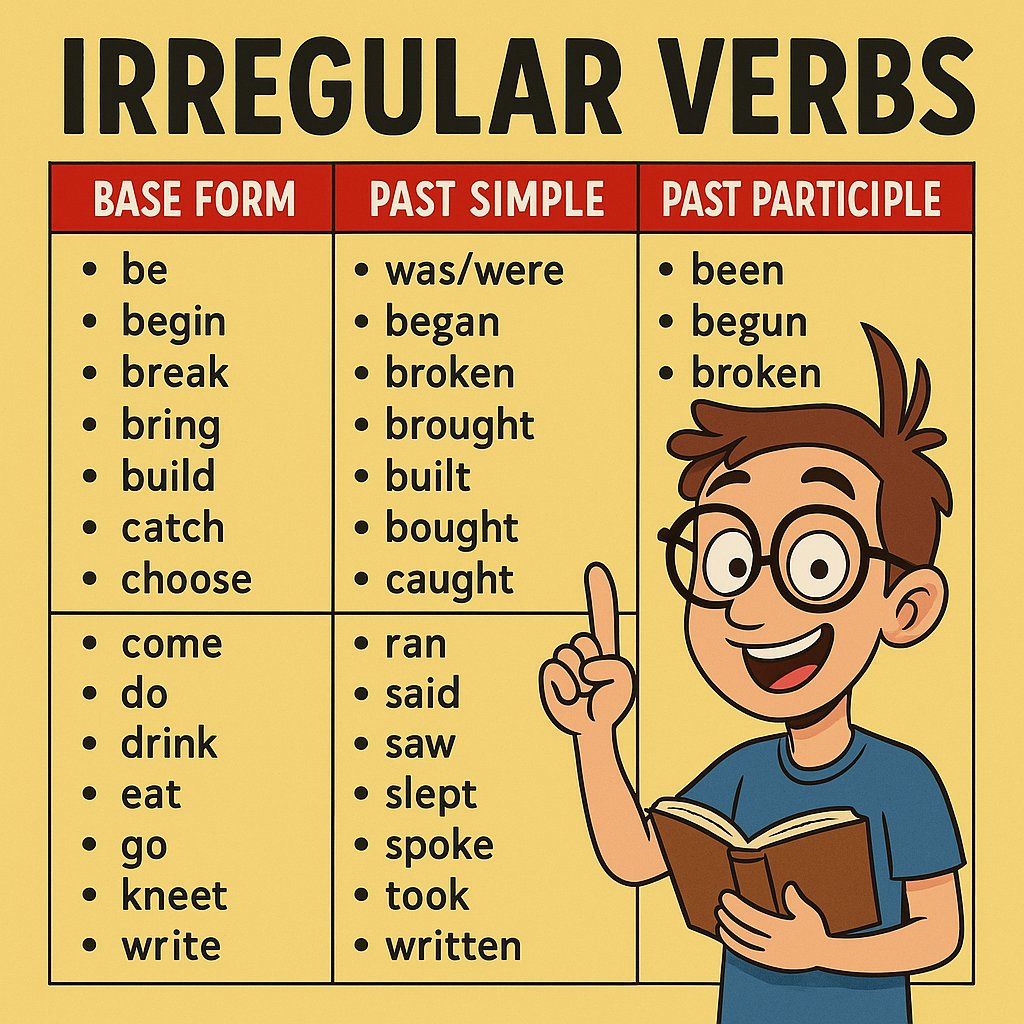In this unit, we will explore the differences between Regular Verbs and Irregular Verbs in English. Understanding these verb forms is essential for constructing correct sentences in both spoken and written English. Let’s dive in!
What Are Verbs?
Verbs are action words or words that describe states of being. For example:
- Run
- Eat
- Be
Verbs change their form depending on the tense (past, present, future) and the subject (I, you, he, she, etc.).
Regular Verbs
Regular verbs follow a predictable pattern when forming the past simple tense and the past participle. To form these tenses, we usually add -ed to the base form of the verb.
Examples of Regular Verbs:
| Base Form | Past Simple | Past Participle |
|---|---|---|
| Walk | Walked | Walked |
| Clean | Cleaned | Cleaned |
| Play | Played | Played |
Rules for Pronunciation of -ed Ending:
- /t/: After voiceless sounds (e.g., k, p, f, s):
- Watched
- Stopped
- /d/: After voiced sounds (e.g., b, g, l, m, n, vowels):
- Robbed
- Played
- /ɪd/: After t or d:
- Visited
- Needed
Irregular Verbs

Irregular verbs do not follow a single pattern when forming the past simple and past participle. Each irregular verb has its own unique form, so they must be memorized.
Examples of Irregular Verbs:
| Base Form | Past Simple | Past Participle |
|---|---|---|
| Go | Went | Gone |
| Eat | Ate | Eaten |
| See | Saw | Seen |
| Have | Had | Had |
| Do | Did | Done |
Common Irregular Verbs List:
Here is a list of some frequently used irregular verbs:
- Be → Was/Were → Been
- Begin → Began → Begun
- Break → Broke → Broken
- Come → Came → Come
- Drink → Drank → Drunk
Practice Games
Key Takeaways
- Regular Verbs: Add -ed to form the past simple and past participle.
- Irregular Verbs: Do not follow a single pattern; their forms must be memorized.
- Practice is essential to master these verb forms. Use them in sentences to improve your fluency.